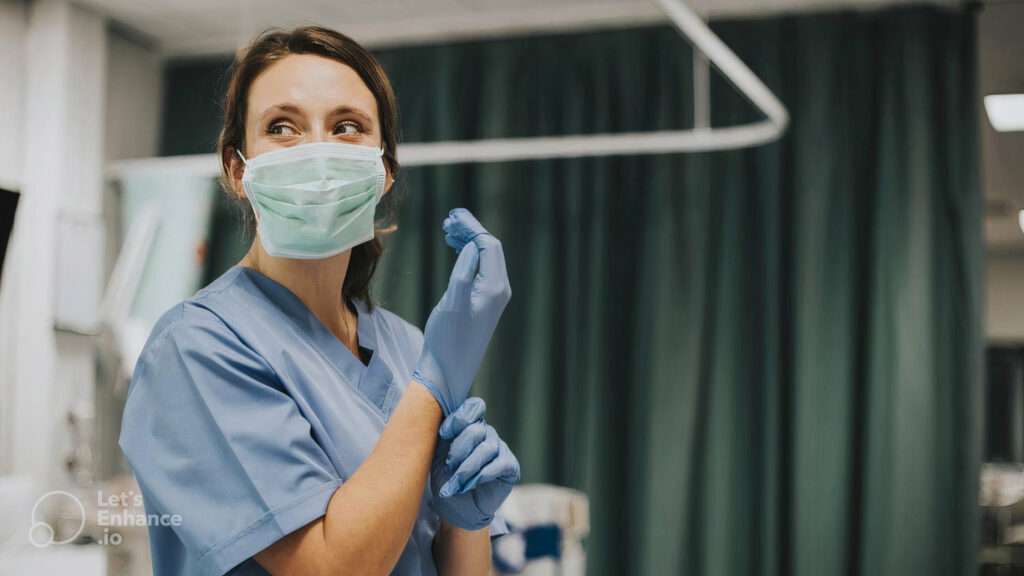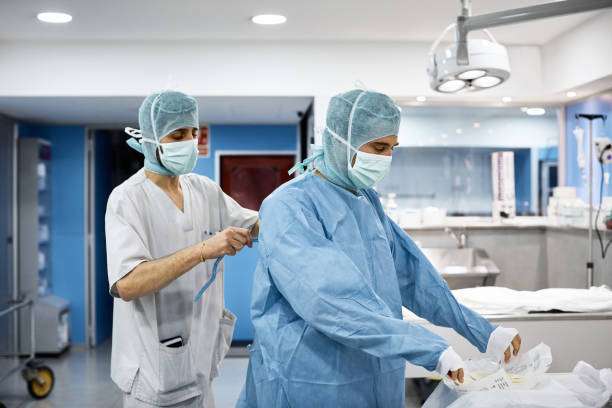Personal protective equipment is a shield that protects both healthcare workers and patients and should be applied and removed in the correct sequence to avoid cross-contamination.
Donning involves putting on the required apparel before patient contact and must be performed in the following order; hand hygiene, gown, mask, eye or face protection, and gloves.
Doffing involves removing the apparel; hand hygiene must be performed after taking off each item; starting with gloves, eye or face protection, gown, and mask. If the proper procedure is not followed, blood, body substances, and other potentially infectious material could be transferred to both healthcare workers and patients.

Donning of Personal Protective Equipment
STEP 1: Thoroughly wash hands for at least 20 seconds before initiating the donning process.
STEP 2: Shoe covers to be initially donned.
STEP 3: Don the N95 respirator mask with the surgical scrub cap over the N95 mask. Eye protection should be used and worn over the respirator and scrub cap. The scrub cap should cover both ears.
STEP 4: Thoroughly scrub hands to the level of the elbows using an antibacterial surgical scrub and warm water and prepare to gown.
STEP 5: Disposable surgical gown to be worn. (Take care to ensure that gown sleeves do not go beyond the wrists as it is put on. Ensure that the top of the gown covers as much of the exposed neck area as possible).
STEP 6: Put on two pairs of gloves ensuring that both gloves fit snugly and cover the sleeves of the gown.
Doffing of Personal Protective Equipment
There is a very high risk of contamination, therefore another individual should watch you doffing the PPE and alert you of any possible contamination.
STEP 1: Wash/clean the outer pair of gloves in water and thereafter remove the outer pair without touching the outside surface of the inner pair of gloves, and discard.
STEP 2: Remove shoe covers and discard.
STEP 3: Clean the internal pair of gloves with alcohol.
STEP 4: Remove the visor without touching the front/exposed surface of the visor and dispose directly into the bin.
STEP 5: Clean the internal pair of gloves with alcohol (again – second time).
STEP 7: Remove the disposable gown by grasping the inside surface of the gown at the collar and rolling the gown away from you without touching the exposed surface of the gown.
STEP 8: Clean the internal pair of gloves with alcohol and then remove
STEP 9: Remove the N95 respirator mask by pulling the elastics over one’s head and discard the mask without touching the exposed surface of the mask. Wash hands with soap and warm water.



